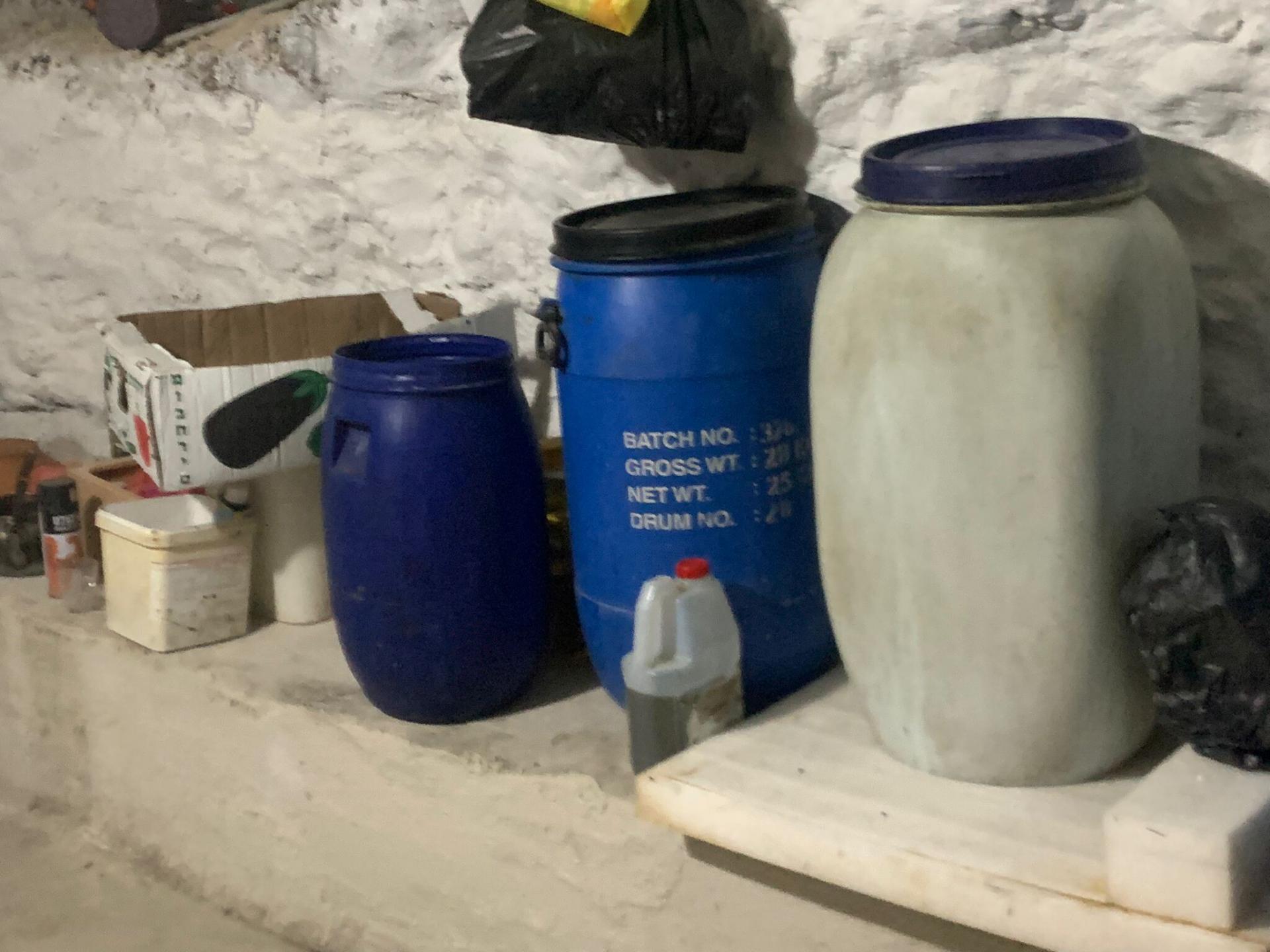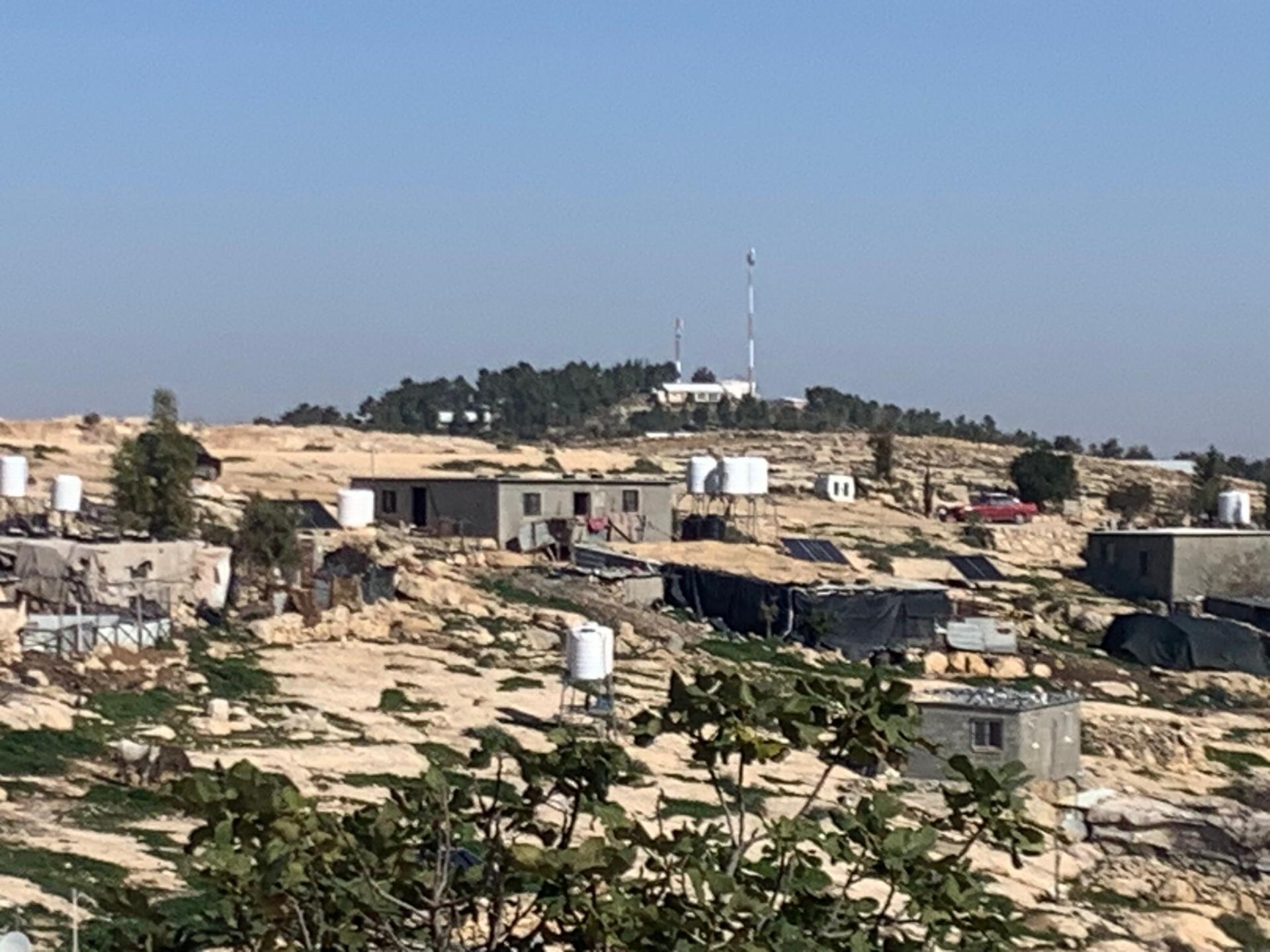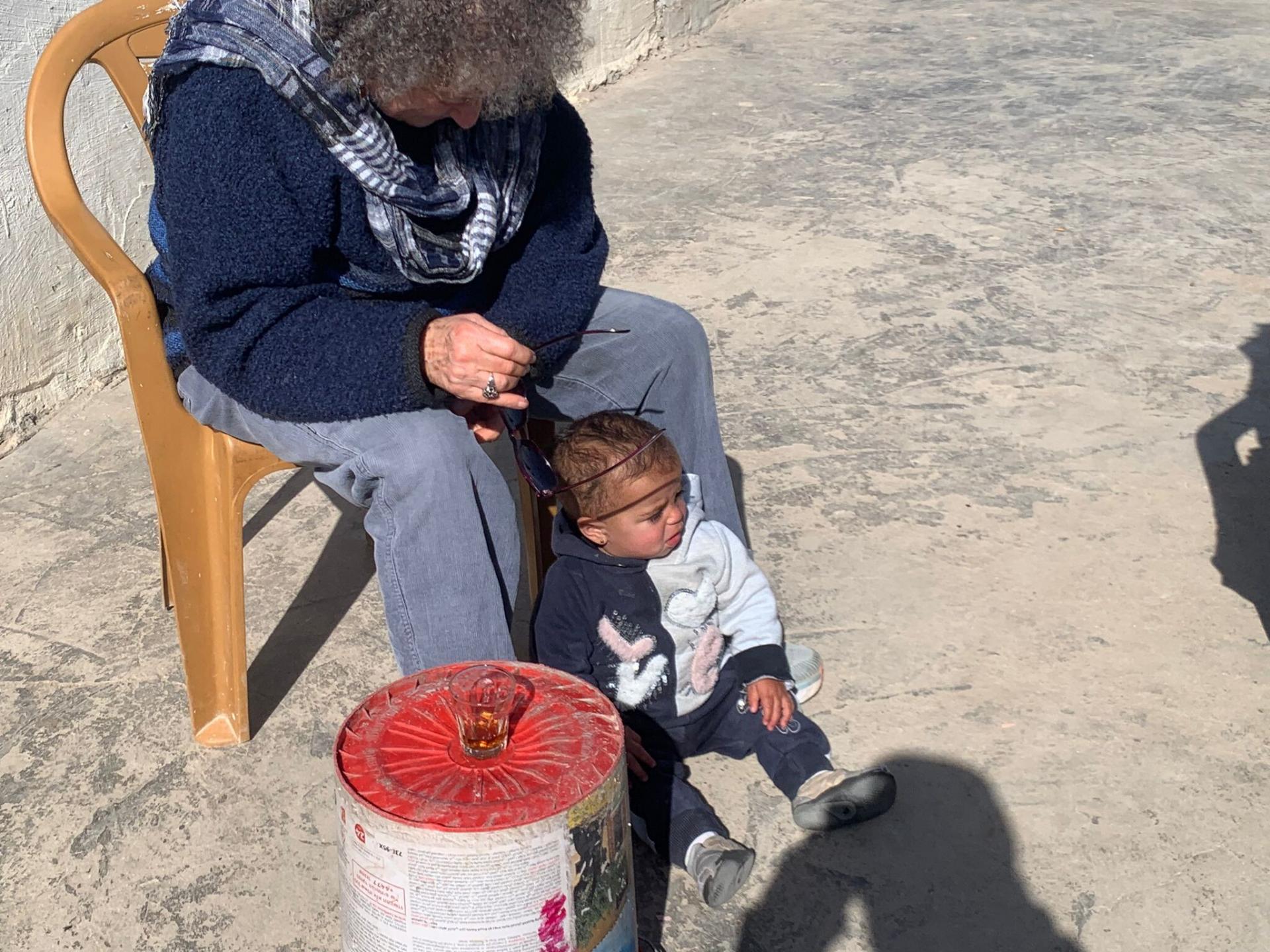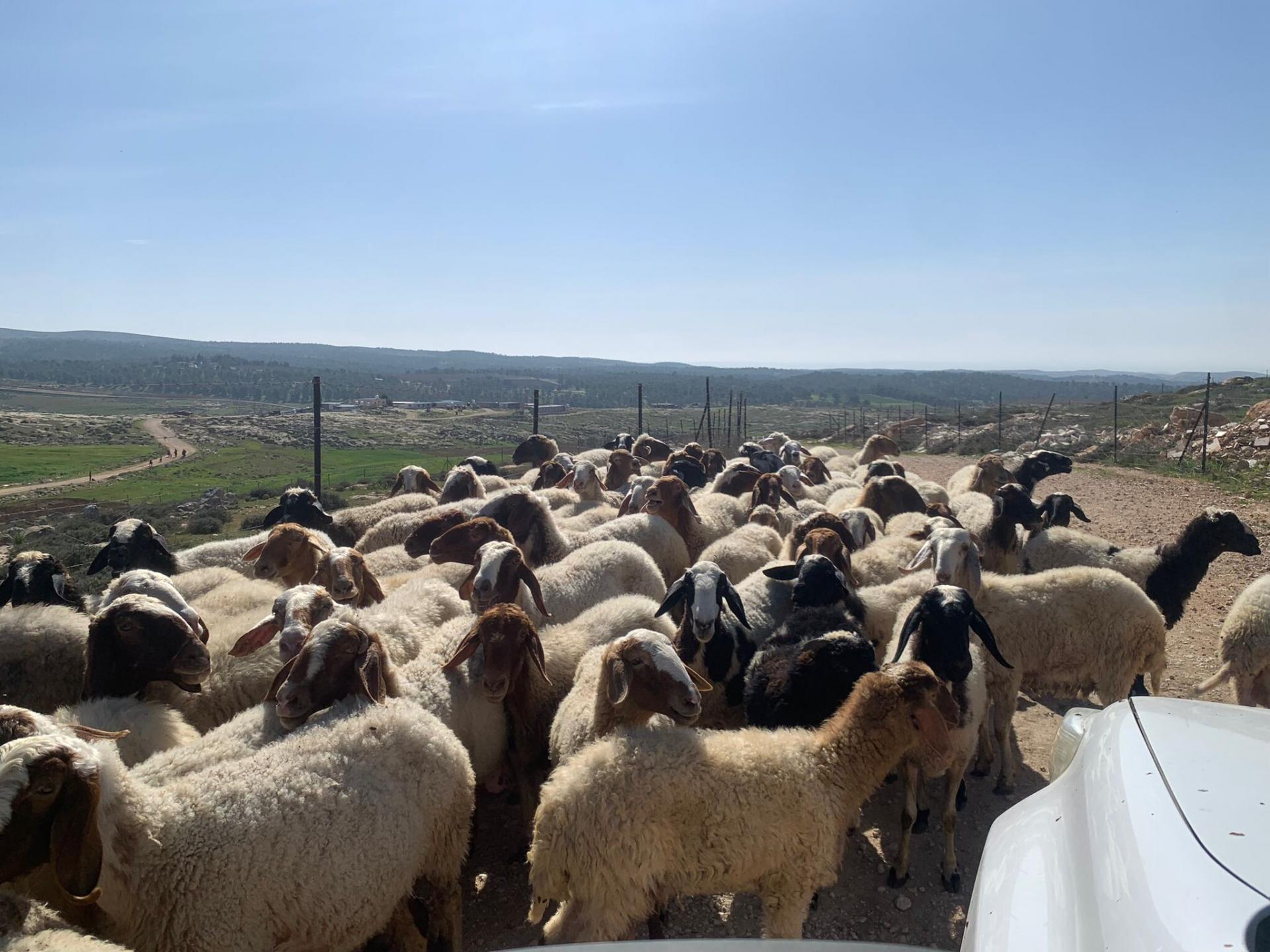Masafer Yatta: Palestinian villages blockaded for vehicles. People drag on foot for kilometers
Route 60:
As far as the Shim’a intersection, all the dirt piles and other obstructions are in place. Some are renewed. The abandoned Zanouta is staring at us from both sides of the road.
Route 317:
Immediately after the turn, on the north side, you can see the abandoned Maktal Umm-Salem, and of course, with the Israeli flag still flying proudly. The flag was placed by the settlers who expelled the family from their home day after day and did not even allow them to return to take their belongings (perhaps these are other settlers. They did not leave receipts).
At the southern end of Samua you see the new encampment of Salah Abu Awwad, who was expelled from the upper Wadada (the area south of the Yatir industrial area, towards the Yatir forest). Salah says (over the phone, we were unable to meet because of the blockades, and Salah's fear of moving away from the new encampment) that a few days ago settlers arrived with a herd of sheep, and once again invaded the newly planted fields. Palestinians from the area rallied to help and tried to chase the settlers away but the latter called the army. Two Palestinians were arrested on unfounded suspicions and no evidence of threatening a soldier with a stone and attempting to steal a weapon. Their detention was extended. He could not tell what the situation is now.
Turning south to the Shani-Livneh outpost (located on both sides of the green line), where the high pillbox is located (extremely high, dominates the entire area from a distance) you see soldiers. Further on there is a gate that the soldiers are monitoring. Shortly after the tall pillbox, we saw a lively movement of Palestinian residents, mostly families, crossing the road on foot. From the side of Samua, from the north, cars arrive on the dirt roads, from which the passengers get off. They cross the obstruction on foot (rocks, large hewn stones, piles of dirt), cross the road and continue on a dirt road on the other side towards the south. Of course, there is also foot traffic in the other direction, and there are cars waiting beyond the barriers, on the side of Samua.
We went up the dirt road leading south. It turns out that the road leads to a small village, Khirbet Ghuwein al Fauqa, close to the Yatir Forest and the Shani-Livaneh settlement. This is a dilapidated shanty town, maybe also caves. It is worth visiting in the future and contacting the residents.
Because of the blockades at the entrances to the villages, men and women of all ages walk along about three kilometers of ups and downs, carrying packages, children. Olive and vegetable vineyards on both sides of the road. Also flocks of sheep. Like an idyll from the biblical era.
We collected Ihab's family in our car: his wife's family from Ghuwein. They were glad: it's hard to drag themselves on foot with packages and a small child. On the way back we picked up other residents who were on their way to Samua. They complain about the difficulty of managing without a car. All the cars in Ghuwein were confiscated by the security forces. They carry food for the sheep on foot. Even donkeys are in short supply. Ahmed from Samua says that some time ago, when they were transferring sacks of barley from Samua to Ghuwein, settlers stopped them, ordered them to load four sacks on their van and allowed the residents to continue with two sacks of barley. They obeyed: what else could they do. Ahmed chuckles bitterly: They both took sacks of barley from us and received free loading services. The men all worked in Israel and therefore speak Hebrew. Now they’re just idly hanging around, in his words
We continued to Al-Mufakara, which lies to the south of Al-Tawani. Continuing on a difficult road through Al-Tawani There is a better way through the Aviayil settlement, but the settlers blocked it. From the height of al-Mufakara, a spectacular view of Yatta can be seen towards the north.
We visited Fadel Hammada's family compound. He is in the pasture with the sheep. We talked and drank tea with the women of the family and their children: Fadel's second wife, two young brides, two children and a baby . They point to the new Daroma farm, to the southwest. The farm was established about a year ago by settlers who came from the Beit Shean Valley (imported from outside...). Now the Palestinian settlement of Al Mufakara is blocked to the northeast by the Ma'on farm, to the west by Avigayil, and to the southwest by the Daroma farm. They have areas in the direction of Daroma Farm, but now it is impossible to grow barley and graze sheep there because of the new settlers. It remains for the people of al-Mufakarah to graze only in the southeast direction.
. They point to the new Daroma farm, to the southwest. The farm was established about a year ago by settlers who came from the Beit Shean Valley (imported from outside...). Now the Palestinian settlement of Al Mufakara is blocked to the northeast by the Ma'on farm, to the west by Avigayil, and to the southwest by the Daroma farm. They have areas in the direction of Daroma Farm, but now it is impossible to grow barley and graze sheep there because of the new settlers. It remains for the people of al-Mufakarah to graze only in the southeast direction.
Astonishingly, it seems that the women have already adapted to the grim reality, and somehow accept life in the shadow of the violent settlers as fate.
What an irony of history: both sides seem to accept the fate of living in the shadow of a violent conflict. What a shame.
.




